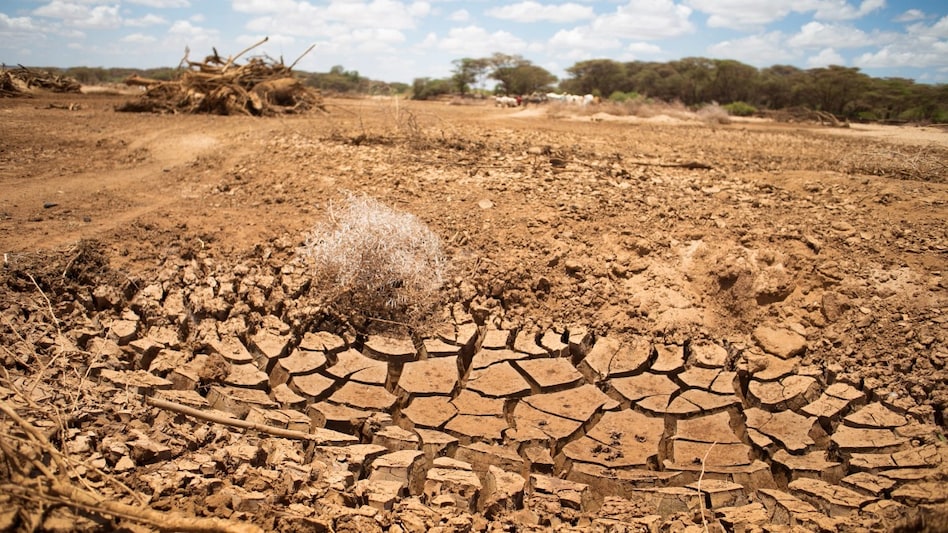 Between 1990 and 2015, Africa lost approximately 12 percent of its GDP due to growing aridity, and the situation is expected to worsen
Between 1990 and 2015, Africa lost approximately 12 percent of its GDP due to growing aridity, and the situation is expected to worsen Between 1990 and 2015, Africa lost approximately 12 percent of its GDP due to growing aridity, and the situation is expected to worsen
Between 1990 and 2015, Africa lost approximately 12 percent of its GDP due to growing aridity, and the situation is expected to worsenA new UN study reveals that over the past three decades, an area of land nearly a third larger than India has shifted from humid conditions to drylands — regions where farming is increasingly difficult.
Drylands now account for 40 percent of Earth’s land, excluding Antarctica. The research, conducted by the UN Science-Policy Interface (SPI), indicates that three-quarters of the world’s land has become drier in the past 30 years, with these changes likely to be permanent.
Between 1990 and 2015, Africa lost approximately 12 percent of its GDP due to growing aridity, and the situation is expected to worsen. Over the next five years, Africa is predicted to lose 16 percent of its GDP, while Asia could see a 7 percent loss.
Ibrahim Thiaw, Executive Secretary of the UN Convention to Combat Desertification (UNCCD), explained, “Unlike droughts, which are temporary periods of low rainfall, aridity represents a permanent, ongoing transformation. Droughts eventually end, but when an area’s climate becomes drier, it is unlikely to return to its original state. These changing climates are fundamentally altering life on Earth.”
Certain crops, like maize in Kenya, are particularly vulnerable — yields are expected to halve by 2050 if current trends persist. Drylands are characterised by 90 percent of rainfall being lost to evaporation, leaving only 10 percent for vegetation. By mid-century, two-thirds of the world’s land is projected to store less water.
Global water issues are intensifying due to inadequate action on reducing greenhouse gas emissions. According to the UN SPI study, by 2020, 30 percent of the world’s population — 2.3 billion people — lived in drylands, up from 22.5 percent in 1990. By 2100, this figure is expected to double if carbon emissions remain unchecked. Nearly half of Africa’s population already resides in drylands.
A global conference under the UNCCD is currently taking place in Riyadh, Saudi Arabia, which will conclude on December 13. Saudi Arabia, one of the world’s most arid nations, is keen to reach a global consensus on halting land degradation and starting restoration efforts. However, despite hosting the conference, Saudi Arabia has been reluctant to engage in discussions on the climate crisis, the leading driver of desertification. It also took a blocking stance at last month’s COP28 climate summit in Azerbaijan.
Barron Orr, Chief Scientist at UNCCD, said, “For the first time, a UN scientific body is warning that fossil fuel burning is causing permanent drying across large parts of the world, with catastrophic consequences for water access that could push both humans and nature to dangerous tipping points.”
The climate breakdown is closely linked to the global water crisis, as multiple studies have shown. In addition, poor farming practices, overuse of water resources, soil erosion, and the destruction of natural vegetation all contribute to the problem.
Kate Gannon, a research fellow at the Grantham Institute at the London School of Economics, told The Guardian: “Rising aridity deepens poverty, forces over-exploitation of fragile resources, and accelerates land degradation, creating a vicious cycle of resource scarcity, water insecurity, and reduced agricultural potential. Vulnerable communities, with the least capacity to adapt, face severe consequences in terms of health, nutrition, and well-being, including food shortages, displacement, and forced migration. This is not only a profound injustice, but also a global challenge.”